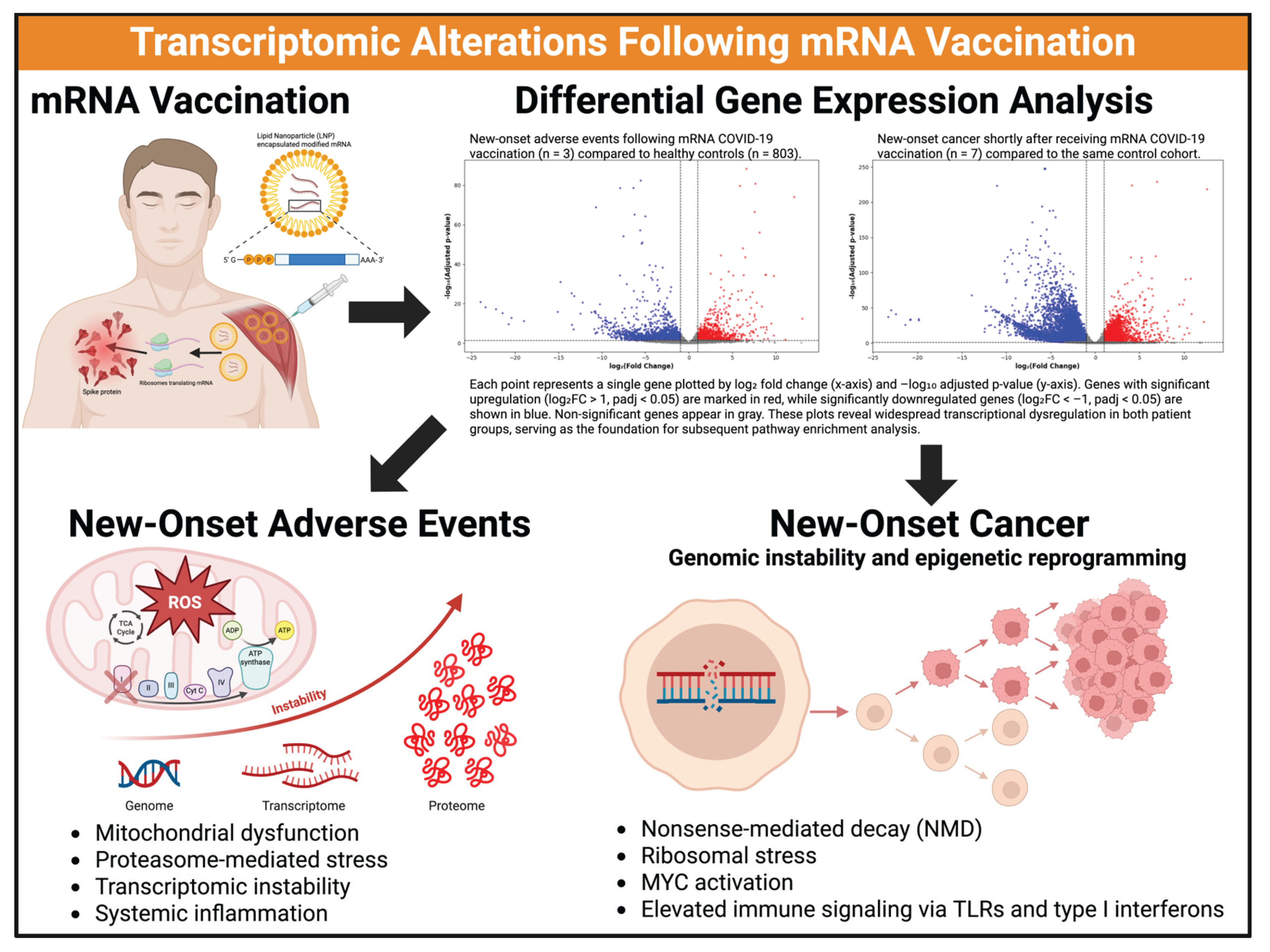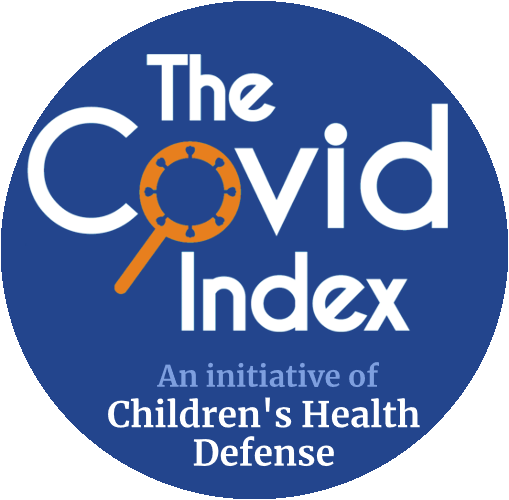"1. Introduction
... Recent analyses of BNT162b2 vaccine vials revealed residual plasmid DNA, including SV40 enhancer and antibiotic resistance genes, raising concerns over potential oncogenic risk from unintended genomic exposure. Moreover, recent research has shown that spike protein translated from mRNA vaccines can persist in the circulation for extended periods, far beyond initial pharmacokinetic expectations, potentially sustaining inflammatory signaling and immune activation. Finally, some studies suggest that SARS-CoV-2 bears molecular signatures consistent with synthetic genome assembly, raising further concerns about engineered RNA platforms and their unforeseen biological consequences. These features collectively raise concerns regarding unintended cellular consequences of synthetic mRNA exposure.
To address this gap, we conducted a comparative transcriptomic analysis using bulk RNA-sequencing data from whole blood of patients with new-onset adverse events (Group 1) and patients with new-onset cancers (Group 2) following COVID-19 mRNA vaccination, alongside healthy controls. Differential expression analysis and Gene Set Enrichment Analysis (GSEA) were performed to identify hallmark-specific molecular pathways perturbed in each group. By comparing these two profiles, this study aims to highlight potential transcriptomic disturbances associated with vaccine-related pathology and explore whether distinct or shared molecular hallmarks may underlie different post-vaccination clinical trajectories...
4. Discussion
The rapid global rollout of RNA-based COVID-19 vaccines introduced a novel therapeutic platform involving synthetic mRNA and lipid nanoparticle (LNP) delivery systems. While initially deployed to mitigate the spread of SARS-CoV-2, the long-term biological effects were unknown. Unlike conventional vaccines, these formulations induce host cells to express a viral spike glycoprotein from exogenous mRNA templates, raising concerns about unintended cellular responses. Emerging clinical reports of persistent symptoms following vaccination—including neurological, cardiovascular, and immunological disturbances—have prompted scientific scrutiny into the molecular mechanisms potentially triggered by prolonged exposure to synthetic mRNA, its translation products, and associated immune activation. To investigate these concerns, we performed gene set enrichment analyses (GSEA) on transcriptomic data from two distinct patient cohorts: individuals with new-onset post-vaccination adverse effects (group 1) and patients who developed cancer following mRNA vaccination (group 2). A summary of the transcriptomic alterations observed in each group is illustrated in Figure 4...
5. Conclusions
This study provides transcriptomic evidence of molecular disruptions in two patient populations—those with new-onset nonmalignant adverse events and those with newly diagnosed cancers—months to years following COVID-19 mRNA vaccination. Using differential expression analysis and GSEA, we identified hallmark signatures of mitochondrial dysfunction, translational stress, immune dysregulation, endothelial disturbance, and proliferative signaling across both cohorts. Notably, while both groups shared transcriptional perturbations in immune and translational pathways, the cancer group exhibited additional signatures of genomic instability and epigenetic remodeling.
Persistent spike protein expression, prolonged synthetic mRNA activity, and RNA modifications such as N1-methylpseudouridine appear to contribute to sustained aberrant ribosomal activity, proteostasis stress, and immune activation. Our findings also highlight transcriptional signals indicative of tumor-promoting conditions, including suppressed p53 networks, activated MYC targets, and altered interferon signaling, particularly in the context of epigenetic dysregulation in the cancer cohort. These observations suggest that vaccine-induced transcriptomic reprogramming may differentially affect individuals, genetically or immunologically over a long period of time after vaccination."
Figure 4.

© 2025 MDPI (Basel, Switzerland) unless otherwise stated.
This open access article is published under a Creative Commons CC BY 4.0 license, which permit the free download, distribution, and reuse, provided that the author and preprint are cited in any reuse.
